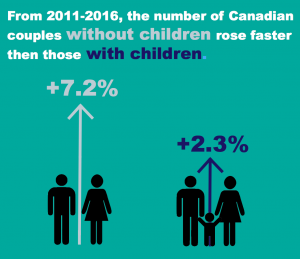According to the latest data from Statistics Canada for 2016, more than one in three young adults in Canada aged between 20-34 are living with at least one parent. At 34.7%, this number of young adults has been rising steadily since 2001.
Why is it that more and more young adults are choosing to live with their parents instead of moving out on their own? Halifax-based family Brenda Kops and Daniel Whittaker have two daughters, Maddy and Claire. Maddy is currently living at home with her parents during her undergrad at Dalhousie, while Claire comes home in the summers while attending vet school at UPEI.
Mother Brenda Kops says Maddy’s decision to stay at home was due to a few different factors, saying “Her university is just one block away so it’s easy for transportation, it’s also easier financially for her to stay at home, and she would rather use that money to go travel and have different experiences.”
Brenda Kops on the various financial issues of moving out during university.
Kops herself left home at 15 years old, and notices that a lot more young adults are choosing to stay at home compared to when she was younger. “I think more people are coming home, either staying home or coming home after university, than they did in my day,” says Kops. “It make sense to have multigenerational families in one home.”

Living at home can provide both financial and emotional support for aging children, as well as help prepare those who are attempting to save up to purchase a home in the future. According to The Canadian Real Estate Association, as of July 2017, the average price for a home in Halifax was $299,847 and for all of Canada $478,696.
Maureen Millier, a mother of two children who have moved out into their own apartments in Halifax, says she wouldn’t be surprised to see them come to live with her again in a few years to save up as well. She says, “Kids are becoming more independent quickly, but then they move back. So they may find their independence in their early 20s, but it’s not uncommon to see them move back at 27 or 28 so they can save up to get a house.”
The smaller age group of 20-24 saw the largest percentage increase of those living at home with a parent, reaching 62.6% in 2016. Once young adults reach their 30s, this number drops dramatically to 13.5% of individuals 30-34 still living at home. However, this is still a 2% increase from 2001.
One of the areas in Halifax that saw the greatest increase of young adults living at home since 2011 was Bedford. Hamzeh Hadad, a 24-year-old recent undergrad graduate who resides in Bedford with his parents, says the sole reason he chose to stay home was to save money. Hadad says, “It financially made sense to stay at home, which allowed me to do other things like travel for internships on my summers off.”
This multigenerational living arrangement is not just beneficial for the children. Numerous parents enjoy having their kids at home both during and after university for a number of reasons. Millier’s son Grant comes to live at home whenever he is not traveling, and she says she loves it when he does. “I thoroughly enjoy it because I have exposure to his friends and it keeps the livelihood in the house…It becomes more of a respectful relationship than a child and parent relationship,” says Millier.
So if you reside in Canada and have a child 20 years and older still living with you, know that you are not alone as this multigenerational living arrangement is becoming more and more common across the entire country.







